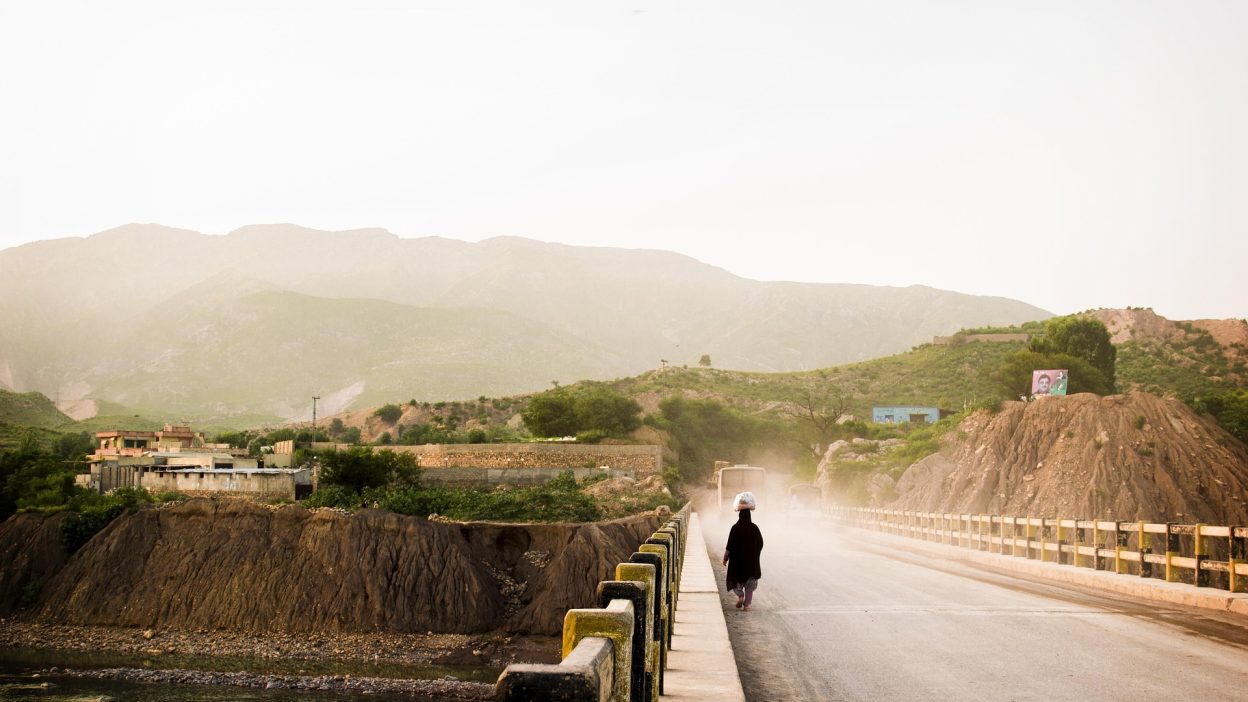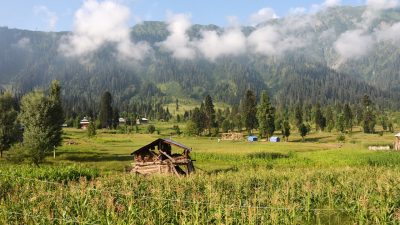The Forgotten Disaster That Shattered Thailand And East Pakistan
1. The Hidden Devastation of Tropical Storm Harriet: A Catastrophe Across Two Nations
The impact of Tropical Storm Harriet, which struck Thailand and East Pakistan in 1962, stands as one of the most devastating natural disasters in the region’s history. While it didn’t capture global headlines like other storms, its ferocious power left both countries reeling from destruction. Thousands of lives were upended, and entire communities were obliterated, marking a tragic moment in both nations’ histories.
What set Harriet apart was the unexpected nature of its fury. It arrived with little warning, and its arrival was a complete shock to local authorities. The lack of early preparation and warning systems contributed to the extensive damage, and the aftershocks of the disaster still echo today in the social, economic, and political landscapes of both Thailand and East Pakistan (modern-day Bangladesh).
2. The Government’s Slow Response to Tropical Storm Harriet: A Lost Opportunity to Save Lives
A key factor in the severity of Tropical Storm Harriet was the delay in government action. In both Thailand and East Pakistan, the response was sluggish, and aid was not mobilised quickly enough to save lives. In East Pakistan, ongoing political instability and inadequate infrastructure hampered efforts to deliver timely help. In Thailand, although efforts were made, the response was less than ideal and failed to prevent significant loss of life.
The failure of both governments to act swiftly compounded the devastation. Thousands were left stranded, without essential supplies like food, water, and medical care. The disarray led to widespread panic, with many families separated, unsure of the safety of their loved ones. The lack of efficient coordination and clear communication only worsened the situation, exposing the weaknesses in disaster management at the time.
3. The Human Toll of Tropical Storm Harriet: A Heart-Wrenching Disaster
- Casualties and Injuries: Tropical Storm Harriet claimed more than 1,000 lives, with many others suffering life-altering injuries. The physical destruction was immense, with entire communities wiped out by the storm’s fierce winds and flooding. Many survivors were left severely injured, often trapped under collapsed structures, or facing permanent disabilities.
- Impact on Lives: The social consequences were equally devastating. Countless families lost everything—homes, possessions, and loved ones. The psychological toll on survivors was immense, and many had to face the long-term trauma of grief and loss. Many of those who survived were left homeless and displaced, struggling to rebuild their lives.
- Economic Repercussions: The economic damage caused by the storm was enormous. Vital infrastructure such as roads, bridges, and marketplaces were destroyed, causing a severe disruption to trade and daily life. Local economies collapsed, and the agricultural sector, crucial to both Thailand and East Pakistan, was left in ruins, worsening the financial strain on the already vulnerable populations.
4. The Storm’s Unforeseen Strength: Why Poor Forecasting Worsened the Impact of Tropical Storm Harriet
The severity of Tropical Storm Harriet came as a surprise to meteorologists in the 1960s, who lacked the advanced forecasting technology we have today. Despite initial warnings about a storm forming, the intensity and speed of Harriet’s development caught experts off guard. Had the authorities been able to accurately predict the storm’s trajectory and power, evacuation efforts might have saved lives and reduced the destruction.
The failure of forecasting systems exacerbated the storm’s impact, leaving both countries ill-prepared to handle the severity of the situation. Despite tracking the storm, its rapid intensification left authorities scrambling to respond. The event highlighted the need for improvements in disaster forecasting and early warning systems, which, if implemented earlier, could have saved many lives.
5. The Role of Human Error: Was Tropical Storm Harriet More Than Just a Natural Disaster?
While the force of nature played a significant role in the destruction caused by Tropical Storm Harriet, human error exacerbated the crisis. Both Thailand and East Pakistan were poorly prepared for such a disaster, and their lack of an efficient emergency response system contributed to the high toll. With little warning and no strategic evacuation plans in place, many people found themselves trapped in the path of the storm.
It was not only the natural forces at play; it was the human response—or lack thereof—that worsened the effects. The storm’s devastation could have been mitigated with better planning, communication, and the swift deployment of resources. The failure to anticipate the storm’s strength, combined with governmental inaction, ultimately led to widespread loss and suffering.
6. The Long-Lasting Economic Fallout from Tropical Storm Harriet
The economic consequences of Tropical Storm Harriet were far-reaching. Both Thailand and East Pakistan suffered extensive damage to their economies, especially in agriculture. With crops destroyed and livestock killed, many people faced economic ruin. The local economies ground to a halt as key infrastructure—such as roads, markets, and schools—was wiped out. These losses set back both nations for years, deepening poverty and complicating recovery efforts.
In East Pakistan, the situation was even direr as the agricultural sector was already fragile. The storm exacerbated an already difficult economic situation, with the agricultural heartlands decimated. The loss of crops and farms left many unable to provide for their families, and the lack of relief from the government only worsened the crisis.
7. The Hidden Costs: What Tropical Storm Harriet Left Behind
- Mental Health Impact: Beyond the physical toll, the mental health effects of the storm were profound. Many survivors struggled with grief, anxiety, and PTSD. Witnessing the devastation of entire communities, the death of loved ones, and the trauma of being displaced left emotional scars that would last a lifetime.
- Environmental Damage: The environmental consequences were also severe. Flooding and wind erosion stripped the land of its natural resources, leading to long-term agricultural challenges. Forests were ravaged, and wildlife habitats were destroyed, further complicating the recovery efforts. The storm left behind a damaged ecosystem, increasing the likelihood of future natural disasters.
8. Tropical Storm Harriet’s Legacy: Was It the Worst Storm to Hit the Region?
In terms of destruction, Tropical Storm Harriet remains one of the most devastating storms in Southeast Asia’s history. Its lasting effects, including environmental damage, economic decline, and the psychological scars on survivors, make it one of the most significant disasters to ever strike the region. While other storms have caused higher death tolls, Harriet’s lingering impact has reshaped both Thailand and East Pakistan’s approach to disaster management.
Some experts argue that the storm was one of the worst because of its prolonged aftermath. The lack of infrastructure to support survivors and the slow recovery process made the devastation harder to recover from. For both Thailand and East Pakistan, Harriet became a pivotal event that forced a reconsideration of disaster management practices, although this came too late for the storm’s victims.
9. Acts of Heroism in the Aftermath: How Communities Came Together to Rebuild
Despite the overwhelming devastation, the storm also highlighted the resilience and unity of local communities. Survivors worked together to help one another, rebuilding homes and providing shelter to the displaced. In the face of tragedy, people demonstrated extraordinary acts of bravery and selflessness, saving lives and offering aid to their neighbours.
These acts of heroism were often overshadowed by the scale of the destruction, but they were vital in the recovery process. Survivors not only rebuilt their homes but also rebuilt their communities, showing the incredible strength of the human spirit even in the darkest of times. These stories of survival and solidarity are a testament to the enduring power of human connection.
10. Conclusion: Tropical Storm Harriet’s Lasting Impact on Two Nations
Tropical Storm Harriet forever changed the course of history for both Thailand and East Pakistan. The storm’s immediate devastation, combined with the slow governmental response, left a deep scar on both countries. In its wake, significant improvements in disaster preparedness, forecasting, and response strategies were adopted, although these changes came too late for those who perished.
Looking back, it’s clear that Tropical Storm Harriet was not just a natural disaster—it was a wake-up call for better disaster management. The storm serves as a reminder of how crucial it is to be prepared, not just in terms of infrastructure, but also in terms of timely response and effective communication. Harriet will always be remembered as a turning point in how both nations approach natural disasters.
5 Short FAQs
1. How many casualties were reported from Tropical Storm Harriet?
More than 1,000 lives were lost, with many others injured or displaced by the storm’s force.
2. Why was the storm so catastrophic?
The storm’s power and rapid intensification, combined with inadequate forecasts and slow governmental action, led to its severe impact.
3. Could more lives have been saved with a better response?
Yes, quicker evacuation and better preparation could have mitigated the damage and saved many lives.
4. What were the long-term effects of the storm?
Economic collapse, widespread psychological trauma, and environmental degradation marked the long-lasting effects of the storm.
5. How did Tropical Storm Harriet affect agriculture?
Crops and livestock were destroyed, causing severe food shortages and economic hardship for many farming families.
References:
Tropical Storm Harriet
http://en.wikipedia.org/wiki/Tropical_Storm_Harriet
Pabuk: A very rare event – Remembering ‘Harriet’ in 1962
10 Biggest Storms to Ever Hit Thailand: A Historical Overview




